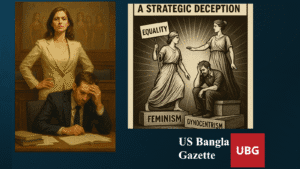Exploring the Paradox of Socioeconomic Status and National Religiosity

Understanding Socioeconomic Status (SES) in Developing vs. Developed Nations
Socioeconomic status (SES) is a critical determinant of individuals’ psychological well-being, encapsulating income, education, and occupation factors. Traditionally, it has been posited that those with lower SES experience more incredible hardships in developing nations, primarily due to stark economic challenges and limited social mobility. Indeed, in many developing countries, factors like poverty, inadequate healthcare, and insufficient educational resources contribute to a complex tapestry of psychological distress. These burdens can manifest through increased rates of anxiety and depression, highlighting the link between socioeconomic challenges and individuals’ mental health in these contexts.
However, recent research has begun to unveil a contrasting perspective, suggesting that individuals in developed nations may also experience significant psychological pressures associated with lower SES. In environments characterized by higher overall wealth and a more robust social safety net, the relative disadvantages of lower SES can become acutely pronounced. Compared to peers who enjoy more affluent lifestyles, they may exacerbate feelings of inadequacy and hopelessness. Moreover, the pressures of maintaining a certain standard of living in a consumer-driven society can also take a toll on mental health, leading to anxiety and stress among those who find themselves unable to meet societal expectations.
The phenomenon of rising mental distress related to lower SES in developed nations raises critical questions regarding economic development. While higher GDP and technological advancements contribute to improved living conditions, they can also foster increased competition and heightened expectations. The irony is that socioeconomic advancement can inadvertently intensify the psychological burdens for individuals facing economic challenges. Such insights reveal the multifaceted nature of SES—indicating that while poverty in developing countries presents observable hardships, the psychological impacts of lower SES in developed nations warrant equal examination and understanding.
The Role of National Religiosity in Societal Norms
National religiosity plays a crucial role in shaping societal norms and values, particularly in the context of socioeconomic status (SES). In many developing nations, a higher level of religiosity often correlates with stronger communal bonds and an emphasis on social support. This phenomenon can be attributed to the teachings and doctrines of major world religions, which frequently highlight the importance of caring for the needy and the less fortunate. Such religious foundations create a framework within which individuals are encouraged to extend support to one another, thereby fostering a culture of empathy and solidarity.
As individuals face challenges associated with lower SES, the religious community is a vital resource for emotional and practical assistance. This support can manifest in various forms, such as charitable initiatives, social gatherings, and community-based programs aimed at alleviating the struggles faced by economically disadvantaged individuals. The communal values espoused by these religious groups can buffer against the negative psychological and social impacts of poverty, offering a sense of belonging and purpose that may be lacking in the wider society.
Moreover, the emphasis on communal support found in many religions helps mitigate some of the adverse effects of socioeconomic struggles. By prioritizing collective welfare and emphasizing shared responsibility, national religiosity can facilitate an environment where individuals are more likely to receive help, share resources, and contribute to the well-being of others. This is particularly significant in societies where institutional support systems may be limited or inadequately resourced, making religious institutions a crucial alternative for social safety nets.
In essence, the interplay between national religiosity and societal norms reveals how faith can serve as a catalyst for communal solidarity, particularly in contexts where socioeconomic challenges prevail. By promoting shared values and mutual support, higher levels of religiosity may substantively influence the resilience of communities facing economic adversity.
Contrasting Data: Evidence from Global Research
The relationship between socioeconomic status (SES) and national religiosity has been explored extensively through various globally representative datasets. Three significant studies conducted between 2015 and 2023 provide compelling evidence regarding the dynamics of this relationship. These studies comprise samples from diverse countries and utilize methodologies that combine qualitative and quantitative approaches, enhancing the reliability of the findings.
In the first study, researchers analyzed data from the World Values Survey, encompassing responses from over 500,000 individuals across 80 countries. This survey identified that nations with lower religious adherence tended to exhibit a higher prevalence of psychological distress among populations with lower SES. The methodology employed regression analysis to control for variables such as age, education, and gender, enabling a clearer understanding of how the lack of religious support systems correlates with increased psychological burdens in disadvantaged groups.
The second dataset, sourced from the Pew Research Center, drew from a global panel of more than 300,000 participants. This research highlighted that in many developed countries, individuals from lower SES backgrounds reported feeling more isolated and stressed as religiosity declined. The use of longitudinal data allowed researchers to track changes over time, revealing a significant trend: as religiosity decreases, so too does the perceived social support among lower SES individuals, exacerbating their psychological challenges.
Lastly, the Gallup World Poll provided insights from over 200 countries and more than 1 million respondents. This dataset focused on how affiliation with religious communities influences perceptions of well-being among lower SES individuals. Analysis indicated that, in societies with heightened secularism, individuals with lower SES faced increased emotional distress, reinforcing the notion that religiosity can play a pivotal role in buffering against the challenges associated with economic hardship.
These contrasting findings from diverse global datasets underscore the need for further research into the underlying mechanisms that link national religiosity with the socioeconomic experiences of individuals, particularly those in lower SES brackets.
Implications for Policy and Future Research
The findings regarding the relationship between socioeconomic status (SES) and national religiosity have significant implications for policymakers and researchers. As observed, the decline in national religiosity may disproportionately affect lower SES populations, further exacerbating existing social inequalities. Policymakers must recognize that religiosity often serves as a vital support system for these communities, offering social cohesion and emotional resilience. Consequently, a thorough understanding of how declining religiosity impacts societal well-being is imperative for designing effective interventions that cater to the needs of vulnerable groups.
Policymakers should consider implementing programs that bolster community engagement and social support networks, particularly in economically disadvantaged areas. This could involve promoting partnerships between secular and faith-based organizations, which may offer critical resources and services to those in need. Additionally, integrating discussions about the roles of spirituality and community engagement into social service provision may help mitigate the adverse effects of declining religiosity.
From a research perspective, future investigations should focus on longitudinal studies that track the changing dynamics of religiosity and socioeconomic factors over time. Exploring the psychological and social consequences of reduced religious affiliation within lower SES groups could yield valuable insights. Furthermore, examining alternative support mechanisms that arise without traditional religious frameworks may also prove beneficial. Researchers should prioritize interdisciplinary approaches, collaborating with sociologists, psychologists, and economists to comprehensively understand the multifaceted impacts of declining national religiosity.
In conclusion, the interplay between socioeconomic status and national religiosity warrants ongoing inquiry and policy attention. Addressing the implications of this trend is essential to fostering societal well-being, particularly for lower SES populations who may face heightened vulnerability as a result of these changes. Continued research in this area will be crucial for developing strategies to support and uplift communities impacted by declining religiosity.







